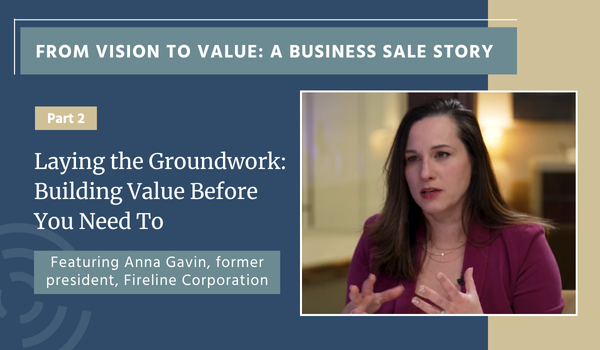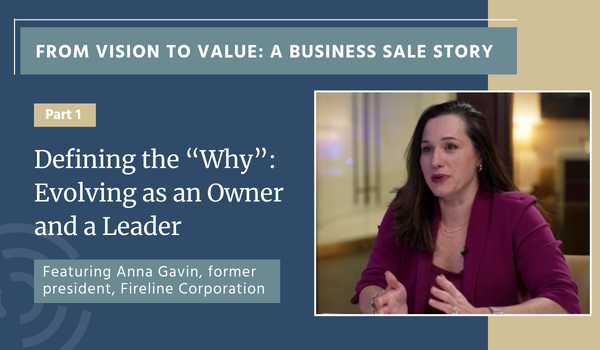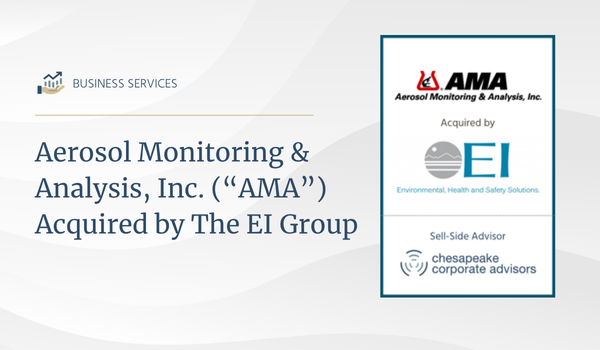This article was originally published on February 3, 2022 on the I-95 Business website.
In order to maximize the value of your company, it is imperative to attract, retain, incentivize and reward mission-critical employees. Talent is scarce and traditional compensation packages do little to inspire high performers in a competitive market. More and more, companies are turning to formal Value Sharing Plans (VSPs) as an alignment tool for leadership and key employees to maintain focus on creating long-term sustainable shareholder value. When designed and implemented with care, Value Sharing Plans can be highly effective for both recruiting and retention.
Creating an Ownership Mindset and Culture
Value Sharing Plans are highly customizable. Business owners typically design VSPs for an Executive Leadership Team (ELT) or a group of high potential Next-Generation Leaders (NGLs) with the primary goal of encouraging an ownership mindset and culture, which rewards decisions that improve your company’s valuation.
Many of today’s Value Sharing Plans are designed to provide the opportunity for recipients to have economic “skin in the game” without coming out of pocket to purchase company stock and without the immediate taxes due when the company stock is awarded as compensation.
Establishing a Baseline Valuation
Prior to implementing a formal Value Sharing Plan, it is wise to have a thorough understanding of the current marketability, value of your business and relevant drivers of value. By establishing a baseline value of your company, and by extension, the value of the shares or units that may be allocated to the VSP, both the shareholders and the Executive Leadership Team will be fully aligned when setting strategy, investing capital and making operational decisions.
Designing the Value Sharing Plan
When designing a formal Value Sharing Plan, one of the most critical questions asks whether the key employees should receive “true” equity as new shareholders of the company, or a type of “synthetic” equity that mimics the economic benefits of owning company shares. In most cases, synthetic equity vehicles tend to be favored by plan designers as they can be structured with more flexibility and control.
Plan designers must also consider whether the participants would receive equity or synthetic equity that is already “in the money” (and thus taxable upon receipt), or whether the plan participants would receive shares or synthetic units that only accrue value as your company’s stock appreciates over time. Again, the latter tends to be favored as a more flexible alternative which better accommodates new plan entrants joining the VSP at different starting valuations.
Other attributes for plan designers to consider include whether to provide for annual profit-sharing opportunities, vesting schedules and whether plan participants may “cash out” if certain conditions are met.
Defining Triggering Events
These conditions are typically defined in plan documents as triggering events, such as death, disability, retirement, sale of the company and termination (voluntary and involuntary with/ without cause). For each triggering event, the Value Sharing Plan would provide for a calculation of value to apply to the participants shares and specific terms of each type of transaction. For example, triggering events that are unfavorable to the company, such as voluntary termination, may result in forfeited or heavily discounted values, and/or long payout terms with minimal interest. Whereas triggering events such as the sale of the company could result in shareholders receiving a significant premium for their shares or units with cash paid immediately at closing.
Implementing the Value Sharing Plan
Formal Value Sharing Plans can be implemented with the assistance of your corporate advisor and corporate attorney. Your corporate advisor will provide a framework for evaluating your alternatives and critical considerations in plan design, while your corporate attorney will draft and execute the necessary legal documents.
Best practices include updating the valuation, the plan statement and each participant’s individual plan statement on an annual basis. Updating and presenting these statements on an annual basis requires discipline, but the process itself reinforces alignment and engagement. It is critical that members of the VSP are incentivized to adopt a genuine ownership mentality, with true skin in the game.





